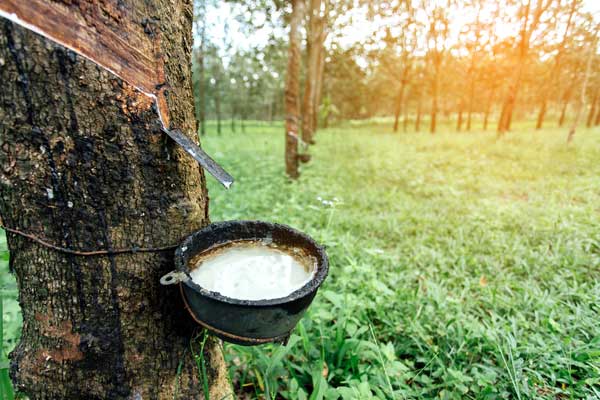This is the story of how Malaysian billionaire Tan Sri Lim Wee Chai lost over RM20 billion in net worth within 2 years due to the dramatic fall of Top Glove Corporation Berhad amidst global economic changes. Top Glove is the world’s largest rubber glove manufacturer, producing about 1 in every 5 gloves globally.
In this article, we will uncover the history behind Malaysia’s rubber industry, the unknown backstory of the founder of Top Glove, and how the company rapidly grew to become a global leader, before falling from grace just as quickly.

The Humble Beginnings of Malaysia’s Rubber Industry
Rubber cultivation in Malaysia began in 1876 when Sir Henry Wickham smuggled 70,000 rubber tree seeds from Brazil and gave them to Sir Henry Nicholas Ridley, a geologist in Singapore. Recognizing that the climate and terrain of Malaya was perfect for growing rubber, Ridley brought some seeds into Malaya and started the first rubber plantations.
By the 1930s, Malaysia had become the world’s largest producer of natural rubber. Even after independence in 1957, rubber accounted for over 30% of total employment and 60% of total exports until the 1980s, when falling rubber prices led plantation owners to switch to more profitable oil palm cultivation.
Nevertheless, the rubber industry continued its transformation up the value chain through increased manufacturing of rubber products within Malaysia itself. From just 50 rubber product manufacturers in the 1970s, the number increased to 168 by 1984.
The Birth of Top Glove
It was against this backdrop that Top Glove was born in 1991 to capitalize on the exploding global demand for rubber gloves driven by the AIDS epidemic. Top Glove’s founder, Lim Wee Chai, recognized the potential of this industry early on. Though Top Glove started modestly with just one factory and five production lines, Lim focused on innovation to set Top Glove apart from the competition.
The Turning Point – Reinventing the Nitrile Glove
A major breakthrough came when Top Glove decided to reinvent the nitrile glove using its own proprietary technology. Though nitrile gloves were unpopular in the medical sector due to their thickness and lack of comfort, Top Glove saw potential for growth if they could significantly improve the qualities of nitrile gloves.
They set up a secret “prototype room” where Lim and a trusted team of engineers experimented extensively until they achieved a breakthrough in 2004. By using their own self-developed production lines to manufacture these new lightweight nitrile gloves, Top Glove successfully revolutionized the industry with the launch of the first sub-5gm nitrile glove.
Rapid Expansion and Ascent to Industry Leadership
Buoyed by the success of their nitrile technology and capitalizing on continued strong demand due to repeated pandemic outbreaks, Top Glove aggressively expanded its production capacity over the next decade. New, efficient plants were opened almost every year, equipped with production lines capable of speeds up to double that of competitors.
In just over 10 years, nitrile gloves grew from less than 5% to over 20% total market share. By 2010, Top Glove had become the world’s largest nitrile glove manufacturer. And by 2020, on the back of further expansion, Top Glove’s glove production capacity reached over 70 billion pieces per year – about 1 in 5 gloves sold globally was a Top Glove glove.
The Good Times are Over
But the good times did not last. Even as demand hit record highs during the COVID-19 pandemic, the industry was hit by a perfect storm of falling average selling prices and skyrocketing raw material, utility and labor costs, made worse by aggressive capacity expansions across the entire industry.
For the first time ever, Top Glove posted losses in 2022. Its share price has crashed over 90% from the peak of RM28 per share in 2020 to just RM1.40 today, wiping out over RM20 billion in market value.
In response, Top Glove made the difficult decision to rationalize production by closing its oldest and least efficient plants. It also slowed down expansion plans. Though still profitable at the operations level, it will take time for supply and demand dynamics to reach equilibrium again.
The Road Ahead
The key question now is whether Top Glove can defend its leadership against the onslaught of Chinese competitors amidst the challenging landscape. With hoarded inventories and China’s government subsidies allowing newer Chinese players to sell gloves at below cost, it remains to be seen if Top Glove’s nitrile technology – the source of its original competitive advantage – is enough to carry it through the storm.
Conclusion
In summary, while the long-term outlook for glove demand remains positive due to low per capita usage globally, the industry is expected to go through a period of extended consolidation over the next 3 years before the next growth cycle kicks in. It also remains uncertain whether Top Glove can retain its pole position once this happens.
